Knysna Fine Art was established in 1998: at 25, it’s expanded its exhibition space to 900 square metres
William Smith: Evolution of an educator
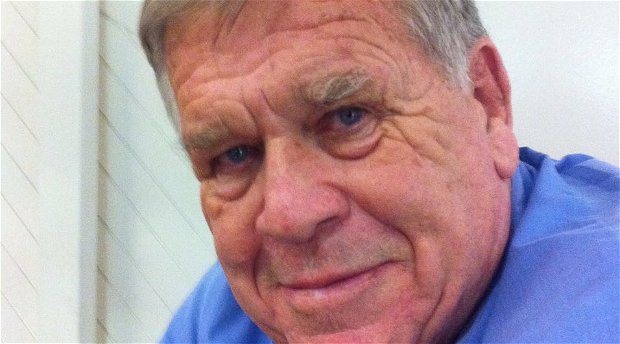
Knysna’s William Smith - teacher, television personality - is now a Grand Counsellor of South Africa’s Order of the Baobab. Here we trace his evolution - from helping one, single student, to teaching 100 million students a day.
On the 25th of April, 2019, South Africa’s president Cyril Ramaphosa invested the country’s (and Knysna’s!) best-known teacher - William Smith - with the nation’s Order of the Baobab class 2: Grand Counsellor of the Order of the Baobab (Silver).
This order is given to South African citizens who’ve gone “well above and beyond the ordinary call of duty” in business, the economy, science, medicine, technological innovation, or community service.
So how did Smith’s now famous teaching career evolve?
EARLY YEARS
William Macdonald Smith was born in Makhanda to Professor JLB Smith (the chemist and ichthyologist who identified and described the coelacanth), and Professor Margaret Smith (an ichthyologist and illustrator, and, after her husband’s death, founder of the JLB Smith Institute of Ichthyology, which would later become the South African Institute for Aquatic Biodiversity).
Smith matriculated from Union High School in Graaff-Reinet in 1956, and obtained his B.Sc. and B.Sc. Hons. degrees (both with distinction) from Rhodes University, before completing his M.Sc. at the University of Natal (now the University of KwaZulu-Natal) in 1961.
Although he then started work on his doctorate, he decided that he wouldn’t be happy with the life of an academic, and chose instead to pursue a career in business.
This came as no surprise to anyone who knew him, though: he’d shown his entrepreneurial spirit from an early age - he collected and sold earthworm specimens to his father’s university’s laboratories when he was a boy - and he’d already worked in film, having produced, shot, and starred in the 1960 full-length feature, ‘The Garden Route,’ while still a student.
Although Smith went on to work for AECI and Afrox for a number of years, this film would be seminal to his later successes, since it was funded by the businesses that featured in it - and the methods of sharing production costs that he learned in creating it would become key to his career in education.
WILLIAM SMITH: TEACHER
Smith discovered his talent for teaching during his second year at university, when he began instructing his girlfriend in first-year chemistry. His clear, wry style was apparent from the start, and other students soon joined his classes - and they were prepared to pay for it, too: so much so that he earned enough in that first year to buy his first car (a VW Beetle) as a Christmas present for himself.
After leaving Afrox in his late twenties, Smith began his formal teaching business by providing support to first-year university students - an approach that soon expanded to include supplementary education for high school learners through the now legendary ‘Star Schools’ which gathered together large groups of pupils on weekends and during school holidays at venues like the Wits Great Hall, where they received instruction in maths and science.
Under Smith’s leadership, Star Schools also delivered its lessons on audio casette, and later on video tape, as well as through the pages of various titles in the then Argus Group of Newspapers (including the Johannesburg-based daily, The Star).
While Star Schools offered in-person classes in the country’s major centres - Durban, Cape Town, Johannesburg, etc. - political unrest and poverty across South Africa made access to classes held in the central business districts impossible for many of the large numbers of pupils living in the townships. Also, as an added challenge, leading political figures fighting the Apartheid regime were regularly exhorting the children of the country to ‘put liberty before education.’
Nevertheless, Smith focussed on providing lessons to disadvantaged learners at the much-reduced price of R5.00, with the balance of costs subsidised by corporate sponsors.
WILLIAM SMITH: TELEVISION STAR
In the early 70s, Smith partnered with the national broadcaster (SABC) to create the highly successful radio series, ‘Let’s Speak Afrikaans,’ which, as with his more formal teaching programmes, he linked to visual material in the daily press.
In 1974, he introduced his Tape Tutoring Service, with lessons recorded on audio cassette, and later - as the technology advanced - on video tape. This service was so successful that it attracted the attention of Africa’s leading distance-learning institution, the University of South Africa (UNISA), and audio cassettes were eventually introduced into their correspondence courses, too.
Smith’s recorded educational programmes were driven by the official syllabuses of the day, and quickly evolved to include phone-in questions from the students themselves: an innovation that was considered a world-first at the time.
This would lead to the establishment of The Learning Channel (see ‘Changing a Nation’ below).
In order to have full control of his live broadcasts, Smith developed a one-man television studio - one in which teachers could easily switch between head-and-shoulders shots of themselves (when addressing the audience directly), and aerial views of their hands at work. (In Smith’s case, with fingers usually - and famously - covered in blue ink.)
The sight of Smith’s expressive face - with a dramatic photo of the Knysna Heads as the backdrop - would thus become one of the best-known images on South African television.
In time, Smith’s broadcasts would reach almost every matriculant with access to a television set.
By 1990, the Learning Channel was providing instruction in English, mathematics, biology, and physical science.
In 1990, too, Smith launched his Exam Aid Live to help the matrics prepare for their finals, and which ran during the months of October and November on a broadcast schedule worked around the national examinations timetable.
Later, having mastered the formula of free-to-air recorded lessons supported by live phone-in question-and-answer sessions, Smith would launch TV-Africa, which broadcast to 28 African countries via satellite TV, and which received incoming calls from students in those countries via satellite telephone.
At its peak, TV-Africa reached 100 million students across the continent - every day!
“Dealing with three completely different syllabi and several languages simultaneously and a three or four second delay each time when talking to the pupils proved to be one of the most difficult things Mr Smith ever undertook.” (Rhodes University; distinguished alumni awards citation)
CHANGING A NATION
William Smith has always believed passionately that every pupil should have equal access to top-rate education. He’d run his first multi-racial school as far back as 1970 - drawing unwelcome attention from the Apartheid authorities - but his association with the journalist Aggrey Klaaste and The Sowetan newspaper had far more wide-reaching impact - both on education as a Nation Building project, and on the fortunes of the newspaper itself.
It would also lead to the creation of the Star Schools Rewrite Schools, which would similarly impact on matric pass rates in South Africa.
Klaaste, who had been appointed editor of The Sowetan in 1988, “was distressed by what he saw happening in black communities, where residents faced state terror and political violence. As a result, he sought to rebuild local community organisations and to restore values such as good citizenship, self-help and neighbourly conduct. On taking up the editor’s mantle, he began outlining his “big idea” – nation-building. Its central idea was to unite black South Africans behind community improvement and engagement. He intended the newspaper to be a key driver of the project.” (theconversation.com: ‘How South African editor Aggrey Klaaste put himself on the line with his contrarian idea’)
In 1994, The Argus Newspapers group sold The Sowetan to New Africa Investments Limited (NAIL- chairperson, Dr. Nthato Motlana). Klaaste retained his position as editor-in-chief, though, and he was therefore able to continue with his Nation Building initiatives - so when Smith invited him to work with him on his new ‘Learning Channel,’ Klaaste immediately agreed.
With sponsorship from the South African insurance giant, Liberty Life, Smith began broadcasting the Learning Channel live on SABCTV3 directly from his own studio in Braamfontein, and Klaaste supported it with a weekly, twelve-page education supplement in The Sowetan.
Published on Fridays, the education supplement included six pages of material prepared by Smith, covering the week’s lessons.
The Liberty Life Foundation sponsored the printing costs of this supplement, too.
The Learning Channel was an instant success, and provided cross-advertising opportunities both on the channel itself, and in the newspaper.
During his broadcasts, Smith would encourage students to acquire the printed lessons - ”With this programme, your schoolteacher. and the material in the Sowetan, you’ll be getting the best education in the world! Now go out and buy your Sowetan today!” - while the paper promoted the Learning Channel via its daily TV guide, which it had redesigned to accommodate the channel (with Smith’s smiling face prominently displayed).
Since Smith was highly regarded by the paper’s readers, the combined advertising effect produced positive results for everyone involved - including Liberty Life. (In a corporate profile published in September, 2007, news24.com reported that the Liberty Education Foundation had “invested more than R350m in mostly large-scale educational programmes” since its foundation in 1990.)
Before Smith’s education programme was introduced to the Sowetan, the paper enjoyed similar circulation figures to its sister title, The Star - on average, about 175,000 copies per day.
After the introduction of the education supplement, though, The Sowetan’s circulation increased significantly. Although this was boosted by a similar cross-advertising partnership with Tim Modise’s talk show on Radio Metro, the managers of The Sowetan attributed the bulk of the benefit to support from Smith and his Learning Channel.
Increased circulation made the publication considerably more attractive to advertisers, and as more of them bought space in its pages, the paper increased from an average of twenty eight to thirty two pages a day. In turn, the increase in content made The Sowetan more attractive to readers… which meant circulation increased... which attracted even more advertisers….
In the two years following the introduction of the education supplement, The Sowetan’s advertising revenue increased by fifty percent, and circulation grew to about 240,000 copies per day. (In the same period, the circulation of The Star dropped from 175,000 to a little over 150,000 per day.)
Besides massively boosting the reach and content of The Sowetan, Smith and his Learning Channel thus made major contributions to Aggrey Klaaste’s Nation Building campaign, while at the same time benefiting hundreds of thousands of individual students every year.
AGGREY KLAASTE, WILLIAM SMITH, AND THE REWRITE PROGRAMME
At some point before the introduction of the Learning Channel, Klaaste had approached Smith with an idea for a rewrite school to help pupils who’d been negatively affected by the examinations boycott during the political unrest of 1986.
Other rewrite programmes in place at the time helped pupils pass their supplementary exams, which were usually written in March, following the end of the academic year in December. But Smith was concerned that three months wasn’t enough time to teach a year-long syllabus, so, following negotiations between Klaaste and the then ministers of finance and education, pupils who were registered with the Star Schools Matric Rewrite Programme were given permission to rewrite their finals at the end of the year.
In 1987, 950 pupils who had attended weekly classes at the University of the Witwatersrand sat the first ever Star Schools rewrite exams - achieving an average pass mark of around 72%. (This figure would improve, too: in ‘Star Schools give pupils another chance,’ published on 6 November, 2017, The Star reported that, “Today Star Schools’ Matric Rewrite Programme is acknowledged as one of the biggest and most successful in the country, yielding an average annual pass rate of around 78%.”)
WILLIAM SMITH: NATIONAL ORDERS - AND AN HONORARY DOCTORATE
Smith left the Star Schools in 1994, and sold the Learning Channel to the media house, Johnnic Communications (now the Tiso Blackstar Group), in the early 2000s - following which he dedicated his time to his other passion: Knysna’s Featherbed Nature Reserve, which he had developed for tourism in the mid-1980s (and which he sold in 2008).
But, he said, it’s been a busy retirement, what with national orders in 2019, and in 2021 - at last! - an honorary doctorate: a Doctor of Laws (LLD) (honoris causa) from his alma mater, Rhodes University
According to the President’s official citation, Smith was presented with the Order of the Baobab in Silver in 2019,
“For his excellent contribution to the teaching and demystification of mathematics and science. Through the medium of television (TV), he made mathematics and science accessible even to the most marginalised in our society.”
And really, can anyone give anyone else a gift greater than that?
Further Reading
The story of the establishment of Knysna's Leisure Island Boat Club as told by Craig Clarke
A poem presented on the 14th of June, 1882, to John Benn II, pilot at the Knysna Heads


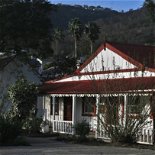


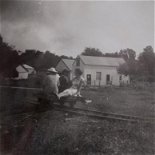


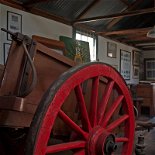
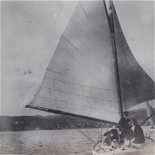


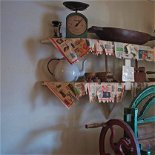
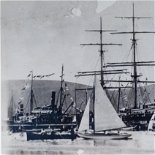
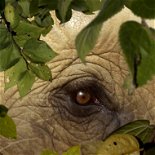
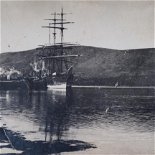


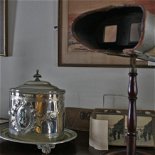
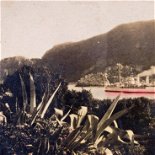
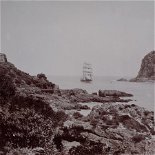
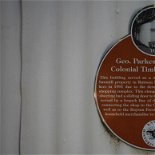
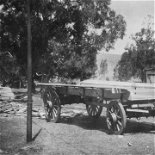
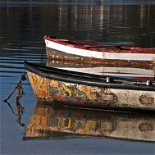

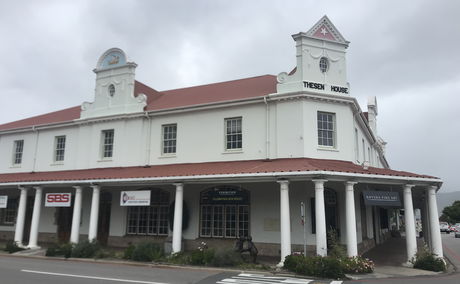
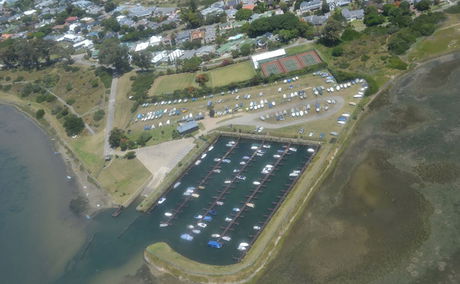
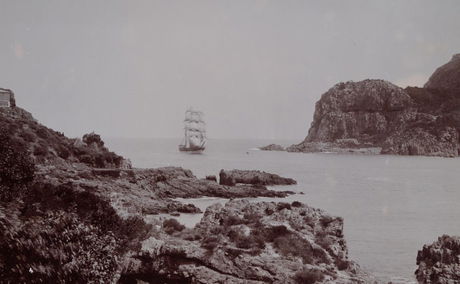
Share This Post